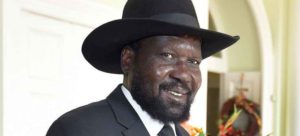South Sudan’s peace deal – what does it really mean?
 The civil war in South Sudan has killed tens of thousands of people and forced more than 4.5 million people from their homes since it began December 2013.
The civil war in South Sudan has killed tens of thousands of people and forced more than 4.5 million people from their homes since it began December 2013.
At one point, at the height of the conflict, 8,000 refugees a day were crossing the border into Uganda.
Now, after months of negotiations, South Sudan’s President Salva Kiir and rebel leader Riek Machar have signed new power-sharing and ceasefire agreement.
The war, along with a crippled national economy and the hazards of delivering humanitarian aid to warring areas has put about 60 percent of the population at risk of malnutrition.
While the agreement appears to be a major step towards ending the civil war, it is not the first time an agreement has been reach only for fighting to break out again.
So, is this another false dawn or a real step towards forging a lasting peace?
The title of the document is a bit of a mouthful. The deal is called the ‘Agreement on Outstanding Issues on Governance and Security Arrangements’.
Although prosaic, it marks another step towards the signing of another deal that is difficult to say – a new ‘Agreement on the Resolution of the Conflict in the Republic of South Sudan” (ARCSS).
The original ARCSS was signed 2015 but soon collapsed. The new power-sharing formula is intended to include more groups in cabinet and parliament.
Another recent positive development was the signing of the Khartoum Declaration in June which included a permanent ceasefire – which is largely holding – and a commitment to withdraw troops from urban centres.
Three days after signing the latest power-sharing agreement, the president granted a general amnesty to Machar and other rebel leaders
But despite the political developments, more than six million people in South Sudan are facing “crisis” or “emergency” levels of acute food insecurity, according to UN agencies.
In areas affected by conflict, it will be difficult for households to reap a harvest and the possibility of extreme food insecurity through to January 2019 will remain,” the US has said.
But aid agencies say the end to the fighting could mean improved access to areas where it has been too dangerous to deliver assistance.
There has already been a reduction in fighting since the Khartoum Declaration was signed, and humanitarian access to several areas has improved.
The agreement paves the way for Machar to return to South Sudan as one of five vice-presidents under Kiir in a three-year transitional government of national unity, due to be formed within three months of the final peace deal being signed. No date for that has yet been set.
The agreement also provides for a 35-strong cabinet, with 20 ministers drawn from the government, nine from Machar’s Sudan People’s Liberation Movement-in-Opposition and six from representatives of other opposition groups. The legislative assembly will have 550 members, 332 from government, and 128 from the opposition.
Pressure from the likes of Ugandan President Yoweri Museveni, and his Sudanese and Kenyan counterparts Omar al-Bashir and Uhuru Kenyatta, coupled with a UN Security Council arms embargo helped drive Kiir and Machar to sign the power-sharing deal, observers say.
But the international community is still unconvinced that the deal is the ‘real deal’.
Britain, the United States, and Norway – the so-called ‘troika’ that helped end Sudan’s protracted civil war in 2005 and deliver South Sudan’s independence six years later – dismissed the current peace process as a road to nowhere.
Mistrust has always characterised the relationship between Kiir and Machar. In fact, Kiir snubbed Machar’s attempt at a handshake during the signing ceremony.
Observers says this mistrust is a major risk factor for return to war.
Issues under discussion in the current round of talks include the powers of the president and vice-presidents, representation in the judicial authority, as well as revision of the country’s administrative division and the naming of new ministries.
A number of other issues need to be resolved to improve the chances of lasting peace, including: the logistics of organising elections; how to integrate some rebel fighters into a national army and demobilise others; and, how a cash-strapped government will fund the enlarged administration and still pay for essential goods and services across the country.
Another challenge will be dealing with armed groups not party to the agreement such as the People’s Democratic Movement and the National Salvation Front.
Kiir and Machar have little to no command and control over various splinter groups within their respective forces; a fact that several observers says is one of the most considerable obstacles to resolving the conflict.
Laurie Nowell
AMES Australia Senior Journalist












